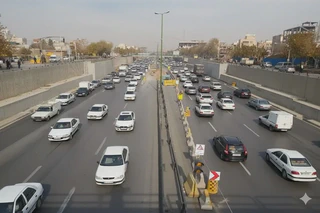Reliable Network Design for Isfahan
 Image credit: Gemini
Image credit: Gemini
Table of Contents
Overview
CLIENT
City of Isfahan
LOCATION
Isfahan, Iran
Role
Designer, Planner
Markets
Healthcare
Transportation Market
Solutions
Financial Investments
Information Provision
Regions
Municipality of Isfahan
Our Client’s Challenge
Isfahan (or Esfahan) is a city in the Central District of Isfahan County, located in Isfahan Province, Iran. It serves as the capital of the province, county, and district. Situated about 440 kilometers (270 miles) south of Tehran, Isfahan has a population of approximately 2.22 million, making it the third most populous city in Iran after Tehran and Mashhad, and the second-largest metropolitan area in the country.
Traffic congestion is one of the main factors contributing to the unsustainability of urban transportation networks. Variations in travel demand and street capacity often lead to recurrent congestion, persistent traffic build-ups that reduce network efficiency and reliability. The City of Isfahan sought to evaluate the performance reliability of its urban transportation network under recurrent congestion conditions, with the goal of helping travelers identify alternative, non-congested routes. A non-congested route was defined as one without any congested links.
This city-funded project focused on several key objectives:
- Reliability Assessment: Developing a customized reliability index for Isfahan that integrates both connectivity reliability and travel time reliability to evaluate the network’s overall performance.
- Information Provision Strategies: Identifying and testing various strategies for improving network reliability through enhanced traffic information sharing with users.
- Network Redesign Strategies: Applying advanced data-driven methods, algorithms, and computational models to identify the most effective redesign strategies for a limited number of streets, ensuring the greatest possible improvement in overall network reliability.
- Stakeholder Reporting: Presenting analytical results, findings, and strategic recommendations to city managers and other key stakeholders.
Our Solution
Our team modeled network reliability under two distinct scenarios: one assuming users were unaware of traffic congestion within the network, and another assuming users had real-time awareness of congestion conditions. A reliable network design model was then developed to optimize overall network reliability, considering both street-widening policies and budget limitations. To efficiently solve this complex optimization problem, a Quantum-Inspired Evolutionary Metaheuristic Algorithm was employed. This approach significantly reduced computation time while maintaining high accuracy, enabling the solution of large-scale, real-world transportation networks.
Parameter estimation
Travel time during a specific hour can vary from day to day due to a range of random factors. To capture these variations, several methods have been proposed in the literature, including the log-normal density function, probability density functions, asymmetric distributions, Weibull distributions, multimodal equilibrium models, and various reliability-based approaches such as connectivity, capacity, behavioral, and potential reliability methods. Among traditional approaches, the log-normal density function has proven particularly effective in representing variations in urban street travel times. Therefore, our team adopted this function to model and describe travel time fluctuations across the city’s network links.
Measuring reliability
Users of urban transportation networks often choose the shortest path among available routes based on their past experiences. When travelers are not provided with real-time information about network conditions, they tend to follow their usual routes to reach their destinations. As a result, if congestion occurs along these routes, their travel experience becomes inefficient and frustrating.
To capture this behavioral dynamic, our team developed two reliability indexes to evaluate network performance under recurrent traffic congestion. The first measures reliability when users are unaware of traffic conditions, while the second reflects reliability when users are informed of congestion across the network’s streets.
Improving the reliability of network performance subject to recurrent traffic congestion
In the third stage of the project, we developed a data-driven optimization model integrated with advanced computational programming linked to EMME to maximize network reliability. The model optimized the allocation of available budgets for construction projects, specifically focusing on widening selected streets to achieve the greatest improvement in overall network performance and reliability.
Outcomes
- Scalable Data-Driven Framework: Developed a replicable, data-driven framework for evaluating multiple scenarios to enhance the reliability of the city’s street network and to guide long-term investment and capital planning decisions.
- Near-Optimal Solutions: Designed advanced models and algorithms capable of achieving solutions very close to the optimal.
- Huge perfromance improvment: The solutions proposed in this project led to a substantial improvement in overall network reliability, specifically, a 22% increase in user full-awareness scenarios.
- Strategic Guidance: Provided the City of Isfahan with a clear roadmap for enhancing the reliability of its street network under recurrent traffic congestion and offered practical guidance on applying the developed analytical framework for future planning and evaluation efforts.